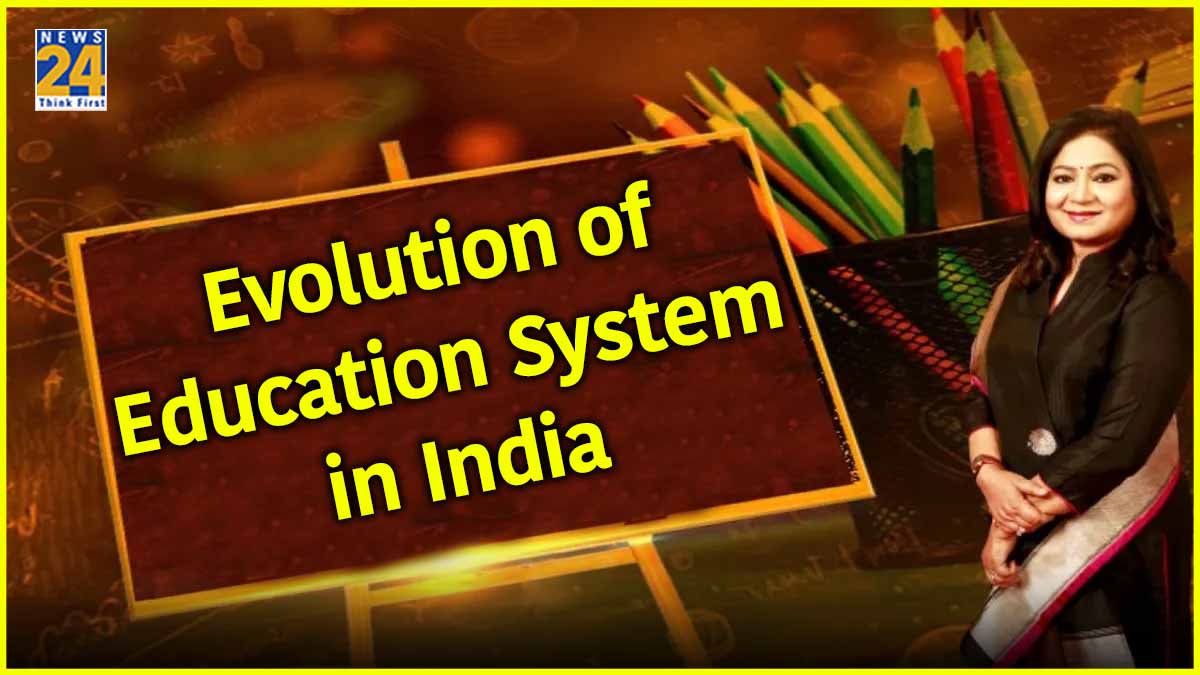Democracy belongs to the people and is for the people. Therefore, in the context of India, there is a very serious issue related to the common people. Educated and conscientious citizens play the most crucial role in strengthening and making democracy successful in any country. It is the responsibility of the government and society to educate the people. Through the New Education Policy, preparation is being made to train students in a way that they don’t require coaching or tuition.
The amalgamation of ancient Gurukul and modern education in the New Education Policy
Apart from becoming engineers and doctors, how are other career options opening up for students? Why is it said that the New Education Policy is an amalgamation of ancient Gurukul and modern education systems? It is essential to understand and know how India, which was once called the world’s guru in ancient times, used to educate its students. How were students trained back then? We will try to explain to you how India has been progressing through various education systems for thousands of years. How changes have been happening over time and what has been the true purpose of education? How has India’s education system continually molded individuals into conscientious, responsible, and civilized citizens, akin to shaping a piece of flesh into a discerning human being? How has it given a new meaning to the human body – from Gurukul to how our education system worked before the 21st century? We will try to explore the answers to all these questions in our special program “The Cycle of Education in India”.
For thousands of years, education has been driving human civilization forward, with teachers, or gurus, playing the role of guides on the driving seat. The Vedas and Puranas indicate that in ancient India, there was a Gurukul system of education where students received education away from their parents in the lap of nature. They were taught to deal with the scriptures, weapons, and practical challenges of life in the guru’s ashrams. During that time, students also had to beg for their livelihood, with the aim of eliminating arrogance from within them. Sacrifice and filling students with humanitarian qualities were the goals in Gurukuls. Education in ancient India was value-based. The initial education was the same for everyone. If we were to say it in today’s language, it was multidisciplinary. The aim was the holistic development of students studying in Gurukuls.
Even in the post-Vedic era, women were educated
In ancient India, for gurus, human life was like a big laboratory, and the purpose of education was to teach students how to deal with the challenges of worldly life. The disciple, while living in the guru’s ashram, also received practical education in society. After that, he would evaluate his knowledge based on practicality. In the Ramayana and Mahabharata era, military education was predominant alongside scriptures in Gurukuls. In the post-Vedic era, women were also an educated, civilised, and respected part of society. They were also educated like men. With time, on the map of India, educational centres such as Takshashila, Nalanda, and Vikramashila started shining. When the world hadn’t even heard the name of a university, organised higher education centres started opening in India. With the advent of Islam in India, the form of education also started changing. In the early period, the purpose of Islamic education was the propagation of religion. It means religious education was at the forefront. The number of madrasas started rapidly increasing instead of Gurukuls. Students started receiving education in Arabic and Persian alongside Sanskrit. Delhi became one of the major centres of Islamic education.
During the Mughal era, the British made their presence felt in India
Just as Islamic education spread during the reign of Muslim rulers, a new language, Urdu, emerged from the fusion of Arabic and Persian. It was during the Mughal era that the British began to establish themselves in India. The British were strategizing to completely seize control of vast India. Officers of the East India Company, which came from Britain, began the work of bridging the language gap. The idea of establishing new schools to teach English first came to an officer of the East India Company, Charles Grant. He considered English as the best medium for education. Later, Lord Macaulay further promoted this idea. The influence of the British began to be seen on Indians as well. The British culture rapidly infiltrated the hearts and minds of the elite class here. By the time of independence, English had become the language of the power elite of the country, including the bureaucracy, judiciary, and academia.
The education system that began during the British era continued
Even after independence, the education system that began during the British era continued with minor changes. However, attention was given to technical education to keep pace with the world. In this series, the opening of IITs started in the 1950s. The aim was to produce better engineers. With the idea of training world-class doctors, AIIMS was established. The idea of elevating business and producing management professionals took shape, leading to the establishment of institutions like IIM Kolkata and Ahmedabad in 1961. However, entry into these major educational institutions was limited to a countable number of students. In most educational institutions across the country, traditional subjects such as history, geography, political science, psychology, philosophy, Hindi, and English were taught. Students chose subjects according to their interests, memorised facts, and passed exams by writing answers to four or five questions. In this regard, in 1964, a committee was formed under Dr. D.S. Kothari’s leadership. Based on the recommendations of this committee, the new education policy of independent India came in 1968. The first education policy of independent India gave a new dimension to the thinking of the country’s youth and gave new wings to their dreams.
Rajiv Gandhi’s government brought a new education policy
Dr. Kothari gave prominence to human concerns and idealistic elements. As a result, a large proportion of youth who excelled in science and technology with high degrees started flying abroad. The world was rapidly changing. The use of computers began to be understood as a necessity of the time. In this context, the government of then Prime Minister Rajiv Gandhi brought a new education policy – 10+2+3, which meant schooling up to the 10th grade, followed by two years of intermediate, where students had to choose between Science, Humanities, or Commerce based on their interests. After that, they had to pursue engineering, medical, BSc, BCom, or BA.
Learning and teaching are processes that continue throughout life
With time, the needs of society keep changing. Therefore, the method and purpose of education also need to change. Any education policy is prepared with the thinking of 20-25 years ahead. In this era of generative artificial intelligence, it is important to note that the thinking of teachers should also be 20-25 years ahead of time. Students should be taught in a way that enables them to benefit from technology as much as possible. A person only acquires a quarter of their knowledge from their teachers at school or college. A quarter of the knowledge is gained by thinking for oneself and solving problems during a continuous process. A quarter of the knowledge is acquired while working in a team. The remaining quarter of the knowledge is gained during practical sessions. This means that learning and teaching is a continuous process in life, which always keeps one eager to learn. However, if the process of learning becomes sluggish after graduating from college, it hinders progress. Therefore, the process of learning and teaching must continue consistently.









